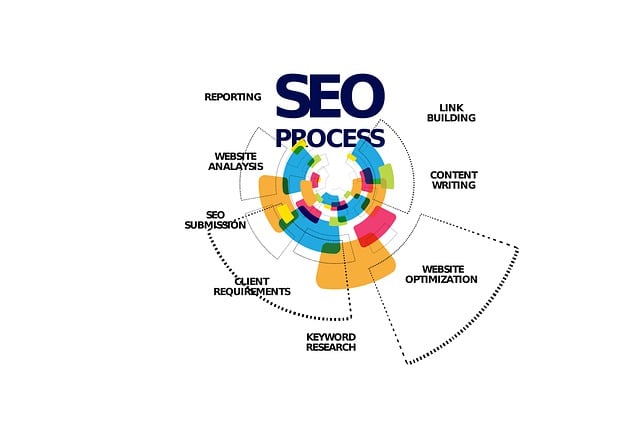On-page SEO techniques
Title Tag Optimization
When it comes to optimizing your title tags for SEO, it is crucial to keep them concise, relevant, and reflective of the content on your webpage. The title tag serves as the first impression for both users and search engines, so make sure it accurately represents the page’s topic and entices users to click through. Including relevant keywords in your title tag can also help improve your chances of ranking higher in search engine results.
Additionally, it is important to ensure that each title tag on your website is unique, as duplicate title tags can confuse search engines and hinder your SEO efforts. By crafting unique and compelling titles for each page, you can improve both the user experience and your overall search engine visibility. Remember to keep your title tags under 60 characters to ensure they display properly in search results and avoid being truncated.
Meta Description Optimization
A well-crafted meta description is a crucial element of on-page SEO. When optimizing meta descriptions, it’s essential to keep them concise, relevant, and informative. This short snippet of text appears in search engine results, providing users with a glimpse of what the page is about. By aligning the meta description with the page content and including relevant keywords, you can improve click-through rates and attract the right audience to your website.
Crafting compelling meta descriptions involves striking a balance between being descriptive and enticing. Avoid stuffing keywords unnaturally and focus on creating a succinct summary that encourages users to click through to your website. Remember that meta descriptions not only influence click-through rates but also contribute to the overall user experience by setting clear expectations about the content they will find on the page.
URL Structure Optimization
Optimizing the URL structure of a website is a crucial aspect of improving its overall search engine visibility and user experience. A well-structured URL not only helps search engines understand the content of a page but also makes it easier for users to navigate the website. When optimizing URLs, it is important to keep them concise, descriptive, and relevant to the content they represent. Avoid using random strings of numbers or symbols in URLs, as they do not provide any meaningful information to search engines or users.
In addition to being descriptive, URLs should also be static and keyword-rich whenever possible. Including relevant keywords in the URL can help improve the page’s ranking for those specific terms in search engine results. It is important to use hyphens to separate words in the URL, as search engines recognize hyphens as word separators. Furthermore, it is advisable to avoid using underscores or spaces in URLs, as they can cause issues with indexing and may not be as user-friendly.
Heading Tag Optimization
Heading tags play a crucial role in optimizing a webpage for SEO. They provide structure and hierarchy to the content, making it easier for both users and search engine crawlers to understand the main topics discussed on the page. Properly utilizing heading tags, such as H1, H2, and H3, can significantly improve the readability and SEO performance of a website.
When optimizing heading tags, it is important to ensure that they accurately reflect the content of the page. Each heading tag should be used to introduce a new section or subtopic, helping to organize the content in a logical and user-friendly manner. By incorporating relevant keywords into heading tags, websites can improve their chances of ranking for those specific terms in search engine results pages.
Keyword Placement and Density
When it comes to optimizing your content for SEO, the strategic placement and density of keywords play a crucial role in increasing visibility and ranking. Keywords should be seamlessly integrated into your content, appearing naturally and organically throughout the text. Avoid keyword stuffing, as this can negatively impact user experience and may result in penalties from search engines.
Incorporate relevant keywords in strategic locations such as the title tag, meta description, headings, and throughout the body of the content. Aim for a keyword density that is balanced and not excessive, ensuring that your main keywords are effectively communicated to search engine crawlers without compromising the readability and quality of your content. Strike a careful balance between optimization for search engines and providing valuable, engaging content for your audience.
Image Optimization
Images play an integral role in enhancing the visual appeal and user experience of a website. When optimizing images for a website, it is crucial to ensure they are of high quality, properly sized, and in the appropriate format. By reducing image file sizes without compromising quality, websites can improve loading times and overall performance. Additionally, utilizing descriptive file names and alt text not only aids in SEO but also ensures accessibility for visually impaired users and enhances overall user experience.
Including relevant keywords in image file names and alt text can further boost SEO efforts and improve the chances of images appearing in search engine results. Properly optimizing images can also contribute to an overall cohesive branding strategy and help reinforce the website’s messaging and content. Implementing responsive images that adapt to various screen sizes and devices is vital for ensuring a seamless user experience across different platforms.
Internal Linking Strategy
Internal linking is a crucial aspect of on-page SEO that assists in establishing a hierarchy on a website and distributing link equity. By strategically linking relevant pages within a website, you can guide both users and search engines to discover and navigate through your content efficiently. Ensuring that the anchor text used for internal links is descriptive and relevant to the linked page helps search engines understand the context and relevance of the linked content.
Moreover, internal linking can also help in spreading ranking power throughout the website by linking from high authority pages to those that may need a boost in visibility. This not only aids in enhancing the overall SEO performance of the website but also improves user experience by providing seamless navigation and access to related information. Implementing a well-thought-out internal linking strategy can significantly impact the organic search visibility and user engagement of a website.
External Linking Strategy
For a successful external linking strategy, it is imperative to carefully select high-quality websites relevant to your content. Ensure that the websites you link to are reputable and authoritative sources in their respective fields. By linking to credible sources, you increase the trustworthiness and value of your own content.
Another key aspect of external linking strategy is to focus on relevance. Make sure that the external links you incorporate seamlessly fit within the context of your content and provide additional value to your readers. By maintaining relevancy in your external links, you not only enhance the user experience but also boost your website’s credibility in the eyes of search engines.
Schema Markup Implementation
Schema markup is a powerful tool that allows search engines to better understand the content of a webpage. By adding schema markup to your website, you provide search engines with additional context about your content, which can lead to higher visibility and better rankings in search results. This structured data helps search engines interpret the information more accurately and can enhance the way your website appears in search engine results pages (SERPs).
Implementing schema markup involves adding specific code to your website that follows a standardized format recognized by search engines. This code provides search engines with detailed information about the content on your website, such as product details, reviews, event information, and much more. By incorporating schema markup into your website, you are ensuring that search engines have a clear understanding of your content, ultimately improving your website’s visibility and relevance to user search queries.
Mobile Optimization
When it comes to ensuring a seamless user experience on your website, mobile optimization plays a crucial role. With the majority of internet users accessing websites from their mobile devices, it is imperative to prioritize mobile optimization to cater to this growing audience. By optimizing your website for mobile devices, you can enhance user engagement, increase site traffic, and ultimately improve your overall search engine rankings.
Mobile optimization involves various aspects such as responsive design, fast loading times, and easy navigation on smaller screens. It is essential to create a mobile-friendly layout that adjusts seamlessly to different screen sizes and resolutions. Optimizing images and videos for mobile viewing, minimizing the use of pop-ups, and ensuring that all website functionalities work effectively on mobile devices are key strategies to enhance the mobile user experience. By prioritizing mobile optimization, you can provide a user-friendly interface that encourages visitors to explore your content and engage with your website more effectively.
Page Speed Optimization
In the context of website performance, page speed optimization plays a critical role in enhancing user experience and search engine rankings. A fast-loading website not only improves user satisfaction but also reduces bounce rates, ultimately leading to higher conversion rates. It is imperative for website owners to prioritize optimizing page speed to ensure seamless navigation and interaction for visitors.
Optimizing page speed involves various techniques such as compressing images, minifying CSS and JavaScript files, leveraging browser caching, and reducing server response times. By implementing these strategies effectively, website owners can significantly improve their website’s loading time and overall performance. In today’s digital age where attention spans are shrinking, a quick-loading website is essential to captivate and retain visitors, making page speed optimization a crucial aspect of website management.
Content Quality and Relevance
Ensuring high-quality content that is relevant to your target audience is paramount in digital marketing strategy. The content you provide on your website should engage users, answer their questions, and provide valuable information. Quality content not only helps in improving search engine rankings but also builds credibility and trust with your audience. It is essential to conduct thorough research and maintain accuracy in the information presented on your website to establish authority in your industry.
Relevancy in content is about creating material that resonates with your target audience and aligns with their interests and needs. By understanding your audience’s preferences and behaviors, you can tailor your content to address their specific concerns and provide solutions to their problems. Relevance plays a crucial role in keeping users engaged and encouraging them to explore more of your website. Strive to create compelling and informative content that adds value to your audience’s experience and keeps them coming back for more.
Canonical Tags
Canonical tags play a crucial role in directing search engines to the preferred version of a web page when duplicate content exists across a website. By using canonical tags, webmasters can prevent issues related to duplicate content and consolidate link equity to the desired URL. This helps in ensuring that search engines properly index and rank the correct page, ultimately improving the overall SEO performance of the website.
Implementing canonical tags is particularly important for e-commerce websites with multiple product pages that have similar content. By specifying the canonical URL on these pages, webmasters can avoid diluting the search engine authority of individual product pages and enhance the visibility of the entire website in search results. Additionally, canonical tags contribute to a better user experience by guiding visitors to the most relevant and authoritative version of a page, reducing confusion and enhancing overall website usability.
User Experience Optimization
User experience optimization plays a crucial role in determining the success of a website. It involves creating a seamless and intuitive browsing experience for users, ensuring that they can easily navigate through the site and find the information they are looking for. By focusing on user experience, website owners can increase user engagement, reduce bounce rates, and ultimately drive conversions.
One key aspect of user experience optimization is the design and layout of the website. A clean and user-friendly design, with clear navigation menus and well-organized content, can significantly enhance the user experience. It is essential to prioritize mobile responsiveness, as an increasing number of users access websites on their smartphones and tablets. Additionally, optimizing page loading speeds and minimizing distractions such as pop-ups or excessive ads can further improve the overall user experience.
Social Media Integration
Social media integration plays a crucial role in enhancing a website’s visibility and engagement with the online audience. By strategically incorporating social media buttons and widgets throughout the website, users are encouraged to share content easily across various platforms. This seamless integration not only increases social signals but also expands the reach of the website’s content, ultimately driving more traffic and attracting a wider audience.
Furthermore, social media integration fosters a sense of community and interaction with visitors. By providing options for social media login or comment sharing, websites can facilitate user engagement and create a more personalized experience. This active participation on social platforms also contributes to building brand loyalty and establishing credibility in the digital landscape.






